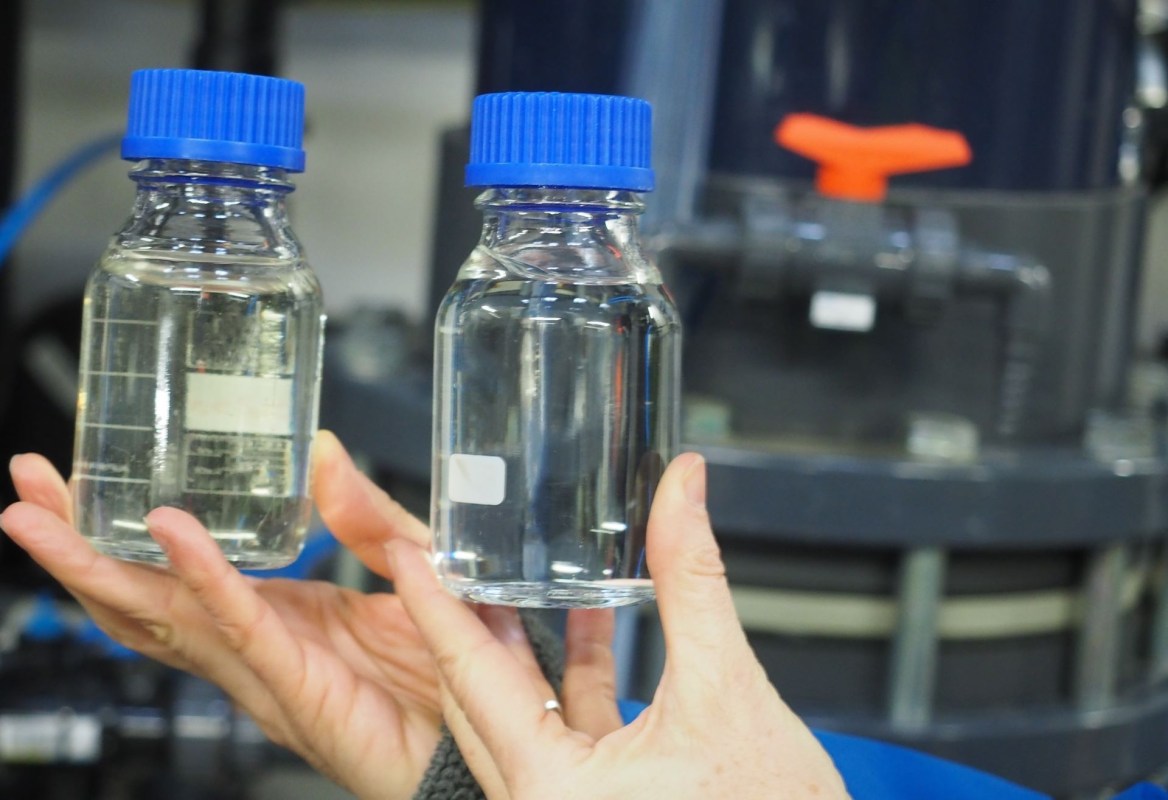Researchers in South Korea have recently developed a new, super-efficient water filtration system using a material called a covalent triazene framework (CTF), according to Michael Irving of New Atlas.
The researchers at Daegu Gyeongbuk Institute of Science and Technology (DGIST) set out to get rid of microplastics — tiny fragments of plastic found in water, food, the environment, and even inside people. Microplastics may or may not be harmful to the human body — researchers aren't sure yet.
But DGIST has now found a way to remove them from water. The material they're using, CTF, is full of microscopic pits and holes that capture all kinds of pollutants, including microplastics.
"Reportedly over 99.9% of the pollutants were removed within 10 seconds," Irving says.
DGIST also built a solar-powered version designed to remove another type of pollution called volatile organic compounds and has developed a prototype that combines both types of filters.
This new type of efficient filtration system could be life-changing for people around the world who worry about their water quality. According to Irving, it works without electricity, and filters can be reused multiple times while staying effective.
In the future, CTF filters might be sold for use in the home, sharply reducing the number of microplastics that owners consume.
They could also supply clean water in places that struggle to get it, such as Dimock, Pennsylvania, and certain parts of Brazil. More than 700 million people worldwide do not have access to basic water services, according to data from UNICEF.
Professor Park Chi-Young, leader of the research team that developed the new filtration system, said, "The technology we developed here is an unrivaled water purification technology with the world's highest purification efficiency, removing more than 99.9% of phenolic microplastics and VOC contaminants in water at ultra-high speeds."
Park went on to say, "We expected that it will be a universal technology with high economic efficiency that can purify contaminated water and supply drinking water even in areas where there is no power supply."
Join our free newsletter for weekly updates on the coolest innovations improving our lives and saving our planet.









